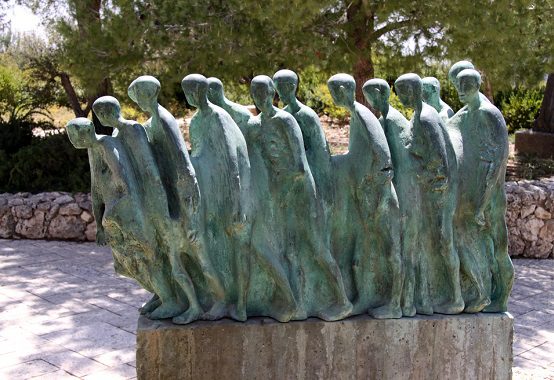History Hidden as Hologram

The technology that lets directors animate a CGI dragon with Benedict Cumberbatch’s snarls, or tweak the nuances of an Marlon Brando’s expressions in post-production is complicating the idea of primary source documents.
Paul Debevec, of the University of Southern California’s Institute for Creative Technology, has taken on some philanthropic work as an addition to his work on big-budget Hollywood projects. Debevec has partnered with the U.S.C. Shoah Foundation to record holographic oral histories from Holocaust survivors. But, in Debevec’s vision, these recordings wouldn’t be static. As he told The New Yorker, he plans for them to be interactive.
Soon, Debevec said, the digital version of [Pinchas] Gutter could be projected into a classroom and questioned by students. The holographic replica could draw on the archive of interviews to answer almost any question relevant to Gutter’s personal history; it could also deflect off-the-wall queries. As Debevec and his colleagues envisaged it, Gutter would be answering questions about the Holocaust long after he was dead.
The New Yorker profile points out that this isn’t as large a leap as it might sound. When Thomas Edison designed his wax cylindrical records–the forerunners of today’s MP3s–he imagined they might be used to tape the last words of a dying relative and to play back their final blessings for years to come.
However, a sound recording or a static picture is more clearly a snapshot of a deceased person than the proposed hologram would be. The responsiveness of Gutter’s simulacra is what chips away at his authenticity. The researchers in the article say that the Gutter displayed could wind up with the same kind of conversational fluency as Siri or any other chatbot.
When students go off-script, and ask the ghost of Gutter questions he never answered in his oral history, they will still receive answers, but their partner will have become the program that animates his face, not the record that the man left in life. And just as Siri is updated to make it easy for the user to pose questions in colloquial language, Gutter’s curators and guardians may “help” him by allowing him to reply to questions he never could have understood, phrased in the slang of times to come.
The extraordinary flexibility of the hologram and modelling technology also allow museum-keepers to update the replies Gutter offers. Once the simulation software has enough footage, it can invent or alter expressions or sync up new animations to new audio. A virtual Gutter could be changed to make reference to events that happened after his death, so that visitors would have an easier time translating his experience into their frame of reference. The animators could even make subtle changes to Gutter’s affect as he repeats the answers he recorded in life, to match the norms of the day. The levers exist, and it’s hard to imagine they’ll never be used.
There’s a virtue in the distance that visible signs of age and moments of cultural incomprehension force upon us. A student who feels the frustration of not being able to ask Gutter a follow-up question is reminded that he is lost. Another visitor, who has to painstakingly rephrase a question, until it’s in a form the real Gutter would have understood must imagine herself in his position instead of finding him pre-adjusted to suit her own.
The false fluency afforded by the hologram doesn’t just distort Gutter’s own story, but the art of history itself. Historians are translators, and just like the translators of novels, they are aware that their reconstructive work is often slightly speculative or relies on a least-bad approximation of whatever actually happened. A translation that appears completely seamless makes us forget that we’re hearing about history secondhand.
L.P. Hartlely characterized the past as “a foreign country: they do things differently there.” In order to understand our history, traditions, and customs, we have to study them as we would a foreign language. The work of attaining fluency gives us a chance to see our current tradition and customs afresh, from the distance of a slightly foreign observer.
A Holocaust exhibit has the difficult task of making us see the horror we’ve learned about in school afresh. To succeed, it needs to make visitors active participants in the work of discovering and translating the past, so that they will feel like they have joined the ranks of curators and guardians. Making them struggle a little to bridge the cultural gap might actually be the best way to encourage them to pledge, “Never again.”
Comments